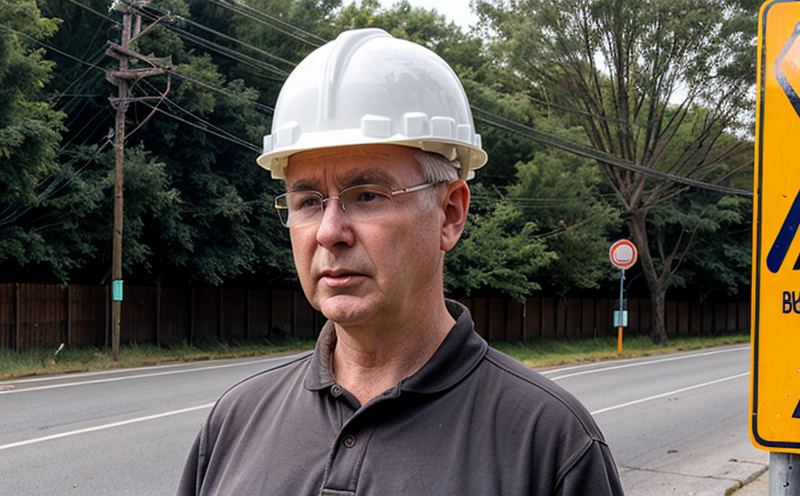ANSI S12.9 Part 2 Community Noise Assessment Methods
The ANSI S12.9 Part 2 standard is specifically designed to assess community noise levels in urban and residential areas, providing a robust framework for measuring environmental noise pollution. This service plays a crucial role in ensuring compliance with local regulations and international standards aimed at mitigating the adverse effects of excessive noise on public health and well-being.
Community noise assessment is essential for several reasons, including:
- Evaluation of noise impact on residential areas
- Assessment of noise generated by industrial activities in proximity to communities
- Monitoring of transportation-related noise sources such as airports and highways
- Ensuring compliance with community noise ordinances and international standards
The ANSI S12.9 Part 2 methodology is particularly suited for assessing sound levels from various sources, including but not limited to:
- Aircraft noise
- Railway noise
- Motor vehicle traffic
- Industrial machinery and processes
The standard provides detailed guidelines for conducting noise measurements, including the use of appropriate instrumentation such as sound level meters, octave band analyzers, and noise dosimeters. It also specifies the placement and duration of measurements to ensure accurate data collection.
To conduct a comprehensive community noise assessment using ANSI S12.9 Part 2, several key steps are involved:
- Identification of noise sources
- Determination of measurement points based on source characteristics and community sensitivity
- Conducting background noise measurements to establish a baseline
- Implementation of continuous monitoring over specified periods
- Data analysis using the ANSI S12.9 Part 2 criteria
- Compilation of results into an actionable report for stakeholders
The service provided by our laboratory ensures that all these steps are meticulously followed, delivering accurate and reliable data that can inform decision-making processes.
| Measurement Parameters | Description |
|---|---|
| Noise Levels | Sound pressure levels measured in decibels (dB) |
| Frequency Bands | Analysis conducted across octave and third-octave bands |
| Measurement Duration | Continuous monitoring for specified durations as per ANSI S12.9 Part 2 |
| Data Analysis | Compliance with ANSI S12.9 Part 2 criteria for acceptable noise levels |
| Reporting | Detailed reports including graphs and tables of results |
The data collected through this method is crucial for identifying areas where noise reduction measures are necessary, and it can be used to support the development of new policies aimed at reducing community noise pollution. Our laboratory adheres strictly to ANSI S12.9 Part 2 standards, ensuring that all assessments are conducted with precision and accuracy.
Scope and Methodology
The scope of this service encompasses the assessment of environmental noise levels in accordance with ANSI S12.9 Part 2, which is a part of the American National Standards Institute’s (ANSI) Acoustical Society standards for community noise assessment.
| Key Components | Description |
|---|---|
| Noise Source Identification | Determination of sources contributing to the total noise environment |
| Measurement Point Selection | Selection of points based on proximity to noise sources and community sensitivity |
| Baseline Noise Measurement | Establishing a baseline for comparison with future measurements |
| Continuous Monitoring | Conducting continuous monitoring over specified periods |
| Data Analysis | Analysis of collected data using ANSI S12.9 Part 2 criteria |
| Report Compilation | Production of detailed reports for stakeholders |
The methodology involves a multi-step process that ensures accurate and reliable noise measurements:
- Detailed site surveys to identify all potential noise sources
- Placement of measurement equipment at strategic points around the area being assessed
- Conducting background noise measurements to establish a baseline
- Implementing continuous monitoring over specified periods, typically ranging from 24 hours to several days
- Data analysis using ANSI S12.9 Part 2 criteria to determine compliance with established standards
- Compilation of results into detailed reports for stakeholders
This process ensures that all noise sources are accounted for and that the data collected is accurate and representative of the community’s noise environment.
Quality and Reliability Assurance
- Use of calibrated and certified instrumentation to ensure accuracy
- Compliance with ANSI S12.9 Part 2 for all measurements
- Data validation through cross-checking with other noise assessment methods
- Regular calibration and maintenance of equipment to prevent drift
- Training of personnel in the latest techniques and best practices
- Continuous quality improvement processes to enhance service delivery
- Detailed documentation of all measurements, analyses, and reports
The quality assurance process is designed to ensure that all assessments are conducted with precision and accuracy. Our laboratory adheres strictly to ANSI S12.9 Part 2 standards, ensuring that all data collected meets the highest quality criteria.
Environmental and Sustainability Contributions
The assessment of community noise pollution is not only important for compliance but also plays a significant role in environmental sustainability. By identifying sources of excessive noise and recommending mitigation strategies, our service contributes to creating quieter, more comfortable environments that enhance the quality of life for residents.
Our laboratory’s services can help in:
- Reducing noise pollution in residential areas
- Improving air quality by encouraging the use of quieter technologies and processes
- Supporting the development of green spaces that provide natural sound barriers
- Enhancing public health by reducing stress and anxiety caused by excessive noise
The data collected through our community noise assessments can be used to inform policy decisions aimed at promoting a more sustainable urban environment. By providing accurate and reliable data, we contribute to the development of effective noise reduction strategies that benefit both communities and the environment.





